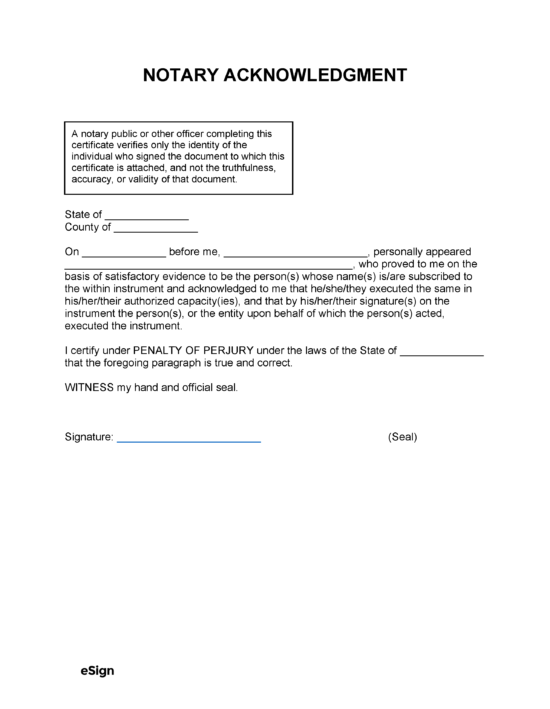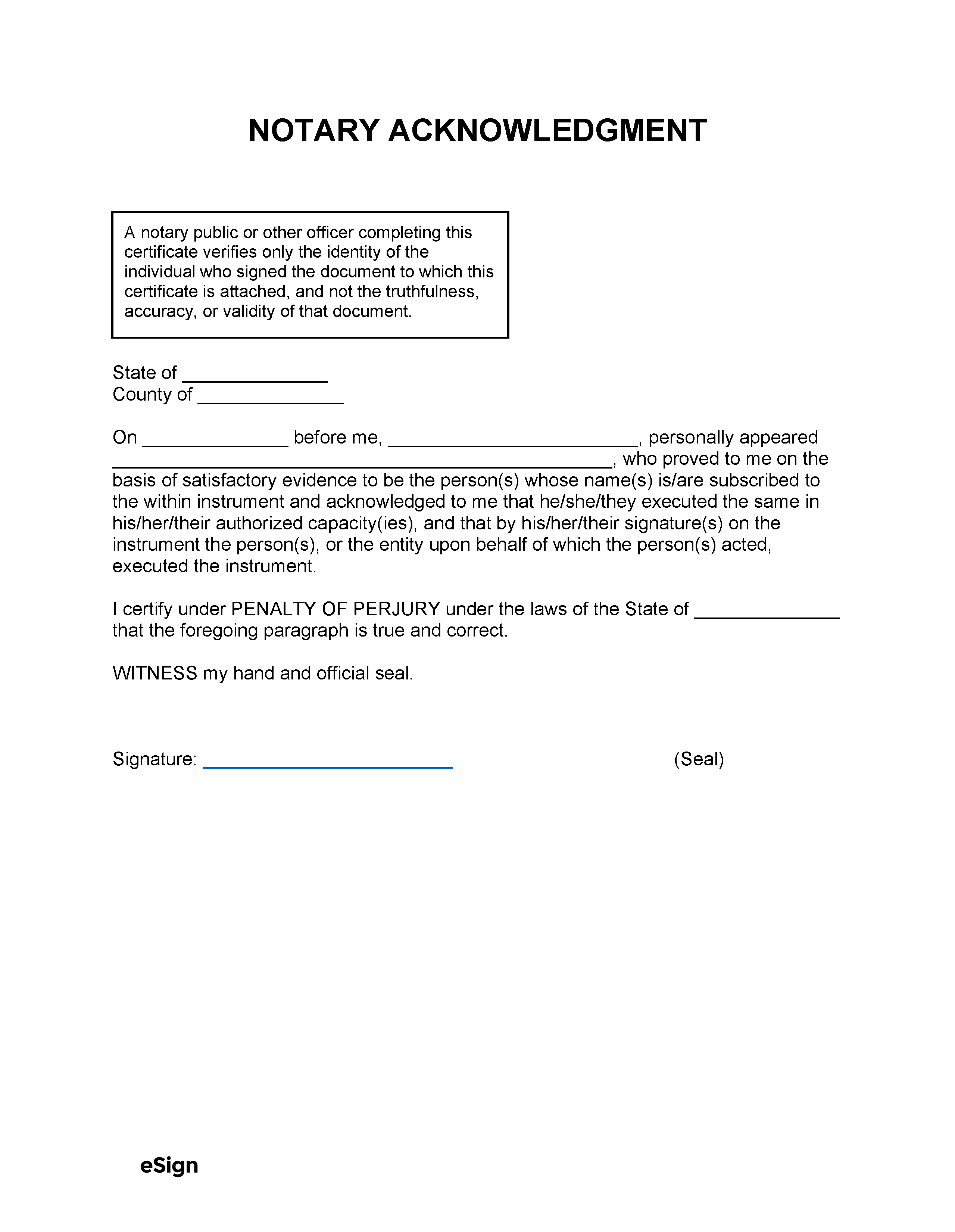Is Online Notarization Legal?
Yes, Remote Online Notarization (RON) is recognized in almost every state.
However, the following states do not recognize RON: California, Georgia, and Mississippi.
By State
- Alabama
- Alaska
- Arizona
- Arkansas
- California
- Colorado
- Connecticut
- Delaware
- Florida
- Georgia
- Hawaii
- Idaho
- Illinois
- Indiana
- Iowa
- Kansas
- Kentucky
- Louisiana
- Maine
- Maryland
- Massachusetts
- Michigan
- Minnesota
- Mississippi
- Missouri
- Montana
- Nebraska
- Nevada
- New Hampshire
- New Jersey
- New Mexico
- New York
- North Carolina
- North Dakota
- Ohio
- Oklahoma
- Oregon
- Pennsylvania
- Rhode Island
- South Carolina
- South Dakota
- Tennessee
- Texas
- Utah
- Vermont
- Virginia
- Washington
- West Virginia
- Wisconsin
- Wyoming
Purpose of a Notary Public
A notary public is an impartial witness to the signing of legal documents who is appointed by a government body, typically the secretary of state.
The purpose of notary acknowledgments is to confirm the identities of the signing parties and ensure they signed of their own free will.
Other Duties
In addition to verifying signatures, notaries perform other duties, including:
- Administering oaths and affirmations
- Authenticating copies of documents
- Witnessing the opening of safety deposit boxes
How to Acknowledge a Signature
Step 1 – Appointment
An appointment with a notary public can be made through banks, law firms, post offices, libraries, and government offices.
Notaries can also be located using the Find a Notary Public on the American Society of Notaries website.
Step 2 – Identification
Whether the appointment is online or in person, the signatory must present the document to be notarized and valid forms of identification for the notary to review.
Unless the notary knows the signatory personally, they will verify the provided pieces of identification.
Step 3 – Signatures
The notary will review the signed document to ascertain what type of notarization is required and check for blank spaces to prevent fraudulent future alterations.
Once they are satisfied, the notary will witness the individual sign the document or have them confirm it’s their signature.
Step 4 – Acknowledgment
After the signature has been verified, the notary will complete the acknowledgment form, which will contain the date, their signature, and their official seal.
Online Notarization Laws: By State
View State Laws |
|||||
| STATE | ONLINE NOTARIZATION? | STATUTE | FORM | ||
| Alabama | Yes | § 36-20-73.1 | |||
| Alaska | Yes | § 44.50.075 | |||
| Arizona | Yes | § 41-263 | |||
| Arkansas | Yes | § 21-14-309 | |||
| California | No | N/A | |||
| Colorado | Yes | § 54-24-514.5 | |||
| Connecticut | Yes | § 3-95b(b) | |||
| Delaware | Yes | § 4320(c) | |||
| Florida | Yes | Chapter 117, Part II | |||
| Georgia | No | N/A | |||
| Hawaii | Yes | § 456-23 | |||
| Idaho | Yes | § 51-114A | |||
| Illinois | Yes | § 6-102.5 | |||
| Indiana | Yes | § 32-42-17-10 | |||
| Iowa | Yes | § 9B.14A | |||
| Kansas | Yes | § 53-5a15 | |||
| Kentucky | Yes | § 423.455 | |||
| Louisiana | Yes | § 623 | |||
| Maine | Yes | § 1915 | |||
| Maryland | Yes | § 18–214 | |||
| Massachusetts | Yes | MGL ch. 222, §§27, 28 | |||
| Michigan | Yes | § 55.286c | |||
| Minnesota | Yes | § 358.645 | |||
| Mississippi | No | N/A | |||
| Missouri | Yes | §§ 486.1100 – 486.1250 | |||
| Montana | Yes | § 1-5-603 | |||
| Nebraska | Yes | § 64-408 | |||
| Nevada | Yes | NRS 240.181 – 240.206 | |||
| New Hampshire | Yes | § 456-B:6-a | |||
| New Jersey | Yes | § 52:7-10.10 | |||
| New Mexico | Yes | § 14-14A-5 | |||
| New York | Yes | NY EXC § 135-c | |||
| North Carolina | Yes | Chapter 10B – Article 2 | |||
| North Dakota | Yes | § 44-06.1-13.1 | |||
| Ohio | Yes | § 147.62, § 147.64, Rule 111:6-1-04 | |||
| Oklahoma | Yes | Remote Online Notary Act (§ 201 – § 214) | |||
| Oregon | Yes | ORS § 194.305 and Or. Admin. R. 160-100-0140 | |||
| Pennsylvania | Yes | § 306.1 and § 320 | |||
| Rhode Island | Yes | §§ 42-30.1-12.1, 12.2 | |||
| South Carolina | Yes | Title 26, Chapter 2 | |||
| South Dakota | Yes | § 18-1-11.1 | |||
| Tennessee | Yes | § 8-16-307 | |||
| Texas | Yes | § 406.106 | |||
| Utah | Yes | § 46-1-3.6 | |||
| Vermont | Yes | § 47.1-6.1 | |||
| Virginia | Yes | § 5379 | |||
| Washington | Yes | § 42.45.280 | |||
| West Virginia | Yes | § 39-4-37 | |||
| Wisconsin | Yes | § 140.145 | |||
| Wyoming | Yes | § 32-3-111(j) | |||
Sample
Download: PDF, Word (.docx), OpenDocument
NOTARY ACKNOWLEDGMENT
State of [STATE]
County of [COUNTY]
On [MM/DD/YYYY] before me, [NOTARY PUBLIC NAME], personally appeared [SIGNER NAME], who proved to me on the basis of satisfactory evidence to be the person(s) whose name(s) is/are subscribed to the within instrument and acknowledged to me that he/she/they executed the same in his/her/their authorized capacity(ies), and that by his/her/their signature(s) on the instrument the person(s), or the entity upon behalf of which the person(s) acted, executed the instrument.
I certify under PENALTY OF PERJURY under the laws of the State of [STATE] that the foregoing paragraph is true and correct.
WITNESS my hand and official seal.
Signature: ________________________
(Seal)

